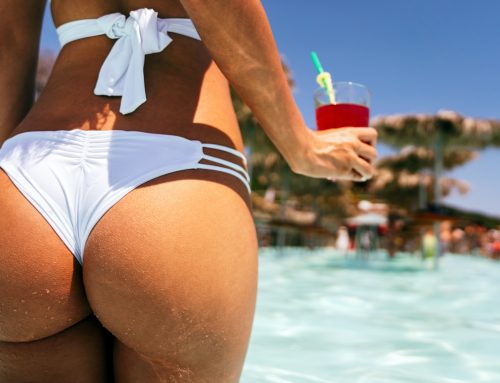Laxity and wrinkles may be part of the natural aging process, but that doesn’t have to be the case. Noninvasive treatments can tighten skin to restore a more youthful look.
Nonsurgical skin-tightening treatments differ significantly from surgical options, requiring much less recovery time and can often be less expensive.
What is collagen?
Collagen is the body’s most abundant protein, accounting for an estimated 30% of its total protein content. It can be found throughout bones, tendons, ligaments, muscle fibers and skin and its composition is comprised of amino acids such as proline, glycine and hydroxyproline linked together in an intricate triple-helix structure – these essential building blocks come from food rich in proteins as well as certain vitamins like Vitamin C that provide your body with its supply.
Collagen plays an essential role in keeping muscles, tendons and skin healthy by binding cells together tightly – keeping muscles strong while speeding healing times – enabling quick repair cycles for tissues like muscles or skin. Furthermore, its elastic quality gives skin its soft but firm quality; additionally it gives bones strength and elasticity as well as being part of blood vessel linings and intestinal tract linings.
As we age, our bodies produce less collagen. Therefore, many people seek collagen-boosting supplements for help. These come in various forms including capsules, liquids and gummies containing marine collagen derived from fish scales and bones to be broken down further into water-soluble molecules through hydrolysation for easier absorption by our bodies.
Food sources of collagen include bone broth, beef, chicken, pork and fish. Unfortunately, the body doesn’t easily digest these proteins until they have been hydrolyzed – that’s why it is essential to consume protein-rich foods that have been hydrolyzed (cooked) so the collagen molecules become smaller (called collagen peptides in most supplements).
Some collagen products, like creams, claim to improve skin elasticity by increasing collagen on the surface of the skin. But dermatologists caution against these claims because the molecules of collagen are too large to penetrate deeply into skin layers – thus most cosmetics containing collagen only target outer layers of the skin. More effective ways of increasing collagen are via in-office procedures or oral supplements with hydrolyzed or peptide collagen.
Nonsurgical options
Alternatives to surgery exist that can tighten loose facial and body skin. These methods include ultrasound and radio frequency devices which use heat energy to promote collagen production, typically performed in-office with little downtime required and often more cost-effective than surgical solutions; results typically take several weeks or months to appear and need to be maintained regularly to remain at their optimal appearance.
Ultrasound skin tightening uses a handheld device to emit soundwaves beneath the surface of the skin and stimulate collagen production in areas such as the brow, chin and neck. The treatment usually lasts 60 to 90 minutes and may cause mild side effects, including redness or numbness.
Radio frequency skin tightening is another method for tightening loose facial and body skin by heating deeper layers of the skin, stimulating collagen and elastin production according to Roy Geronemus MD of New York’s Laser & Skin Surgery Center. He suggests this procedure be performed before or after liposuction to minimize stretch marks on stomach or buttocks, or alternatively as part of stretch mark treatments for stretchmark removal.
Microneedling with radio frequency is another popular technique, which involves inflicting microscopic injuries onto the skin’s surface in order to stimulate its natural healing response and encourage collagen production. These treatments tend to be painless and require no downtime – making them ideal for busy individuals as well as effective against fine lines and wrinkles in facial tissue.
There are various nonsurgical techniques that can improve the look of skin by eliminating fat deposits, smoothing cellulite, and curbing hair growth. These often combine with cosmetic procedures like face lifts or tummy tucks – Kybella for instance can remove excess fat under a double chin, while Sculptura boosts natural production of collagen within your body.
If you’re seeking skin tightening treatments to diminish sagging or loose facial or body skin, be sure to seek advice from an experienced cosmetic surgeon. A Diplomate of the American Board of Cosmetic Surgery can recommend an ideal nonsurgical skin-tightening solution based on your individual needs and goals, while offering insight into combining nonsurgical tightening with other cosmetic services, like injectables or liposuction for enhanced results.
Disclaimer: The content on this blog is intended for general informational purposes only. It is not a substitute for professional medical advice, diagnosis, or treatment. Always consult qualified healthcare providers for personalized advice. Information regarding plastic surgery, dental treatment, hair transplant, and other medical procedures is educational and not a guarantee of results. We do not assume liability for actions taken based on blog content. Medical knowledge evolves; verify information and consult professionals. External links do not imply endorsement. By using this blog, you agree to these terms.





